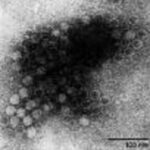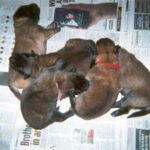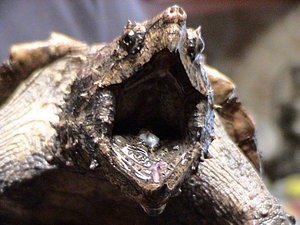Parvo is a horrible disease that eats your dogs stomach lining, then dehydrates your pup to death. It usually strikes puppies at a very young age. Adults can get it also, but usually it does not kill them. Parvo attacks the weaker immune systems, like that of a puppy. Parvo strikes suddenly, and doesn’t give you much time to think about treatment.. Once a puppy gets parvo, it can be a matter of hours to days before the pup dies a horrible death.
Signs that your puppy has parvo: lethargy – no longer playful, the puppy looks afraid to move or is hiding. The puppy starts heaving and throwing up or having diarrhea. The puppy can have both symptoms or just one. Blood will start coming up or out. If you haven’t already taken your pup to the vet then you better now. The blood is the stomach lining.
Do not try and force fluids down your pup. The pup will throw it up. The pup will throw up more than the fluid you put down, making it dehydrate faster.
The pup has to go to the vet. The vet can give the pup antibiotics through an IV to help heal the stomach lining. The vet will continuously have a saline solution for hydration going into the pup. Some vets will give them Phenergan through an IV. The sooner your pup gets treatment the faster they can get help, and hopefully return home to you.
Parvo comes from the ground. Someone can have it on their property. When they go to the store where you shop, you can then pick it up on your feet. When that happens, you carry it home with you. You may buy hay or straw for a dog house that came from someone elses property. You may have another dog, that is already an adult and immune to it. If you let that dog wander, then the dog may come back and give it to the puppy. You may have taken your puppy to the park, or to a pet store. In pet stores, everyone with animals go there and often their animals are allowed to walk around, much like you may be doing.
There are many things you can do to help prevent your pup from getting parvo. Make sure the mother has been vaccinated yearly for parvo. The mothers vaccinations create immunities that the pups use until they have been given all of their shots. Make sure that the pups are staying on their vaccination schedule. Don’t let the puppies chew on your shoes or anyone elses. Don’t take the pup out anywhere unless it is a cleaned area. A cleaned area is one that has not been dug or distubed. A bleach water solution in a fenced area may help, Make sure the bleach solution has dried before letting your puppy in the area.
Be careful in the vets office. I always crate my pup until it is time to get on a disinfected, vet table. The safest time to be comfortable with taking your puppy to the park is after the pup has received all of its vaccinations.
Vaccinations should be bought or given from the veterinarian. Most people who say that their pup had all their vaccinations and still got parvo, had bought them from a feed store. A feed store sells minimum government standard vaccinations. If you are buying the pup make sure the vaccinarion record is from a vet. On the front of the vaccination record it should give the name of the vet, address and the phone number. Many breeders buy the shot records online then buy the shots from the feed stores. They write it down themselves or stick the labels from the shots on the shot record. If that happens, take the pup to the vet and show them. The vet can re-vaccinate them. Always try and buy a puppy that is verifiable. Meaning, you can actually call the previous vet and ask about your puppy.





